This article was medically reviewed by Erik Kramer, DO, MPH. Dr. Erik Kramer is a Board-Certified Primary Care Physician at the University of Colorado. With over 15 years of experience, his clinical interests include obesity and weight management, diabetes care, and preventive care, as well as embracing a holistic approach to primary care. He received his Doctorate in Osteopathic Medicine (D.O.) from the Touro University Nevada College of Osteopathic Medicine and completed his residency at Central Maine Medical Center. Dr. Kramer is a Diplomate of the American Board of Obesity Medicine.
There are 10 references cited in this article, which can be found at the bottom of the page.
This article has been viewed 28,045 times.
Your intestines have a layer of mucus that helps protect them from infections and inflammation. A deficiency in that mucus layer can increase your risk of bowel inflammation, upset stomach, diarrhea, and chronic conditions like colitis.[1] Naturally, you’ll want to support your intestinal mucus to improve your overall GI health. The best method is getting the recommended dosage of fiber, which you can do by following a healthy diet and taking supplements. In addition, follow some lifestyle tips to support your overall GI health.
Steps
Following a High-Fiber Diet
-
1Consume 25-38 g of fiber every day. Fiber is the main nutrient that helps maintain your intestinal mucus.[2] To keep your mucus layer healthy, consume the minimum recommended amount of fiber every day. That level is 25 g for women and 38 g for men. Try to get at least this amount from your diet or supplements.[3]
- Consult your doctor about developing the ideal plan for consuming more fiber if you have a deficiency.
- You can also work with a professional dietitian to design a proper high-fiber diet.
-
2Eat fresh fruits, vegetables, and nuts for natural fiber. Instead of processed or prepared foods, choose fresh varieties of fruits and vegetables for the highest fiber dosage. Nuts like almonds, pistachios, and peanuts also contain high amounts of natural fiber. Include at least one serving of these foods in every meal to keep your fiber intake regulated.[4]
- The best vegetable sources for fiber are leafy greens like kale and spinach, beans, and peas.
- Berries, pears, apples, and ripe bananas are high-fiber fruits. Keep the skin on apples and pears for the highest dose of fiber.
- Frozen vegetables are also a good option for reaching your daily fiber level.
Advertisement -
3Switch to whole-grain products for an extra dose of fiber. White or enriched bread and pasta don’t contain as much fiber as whole-grain varieties. If you normally eat white bread products, switch to whole grain options for a boost in your fiber intake.[5]
- As a general rule, avoid white products. This usually means they’re bleached and enriched, which removes most of their natural nutrients.
- You can also incorporate more whole grains into your cooking. Quinoa, barley, oats, and brown rice are all high in fiber.
- Switch to whole-grain pasta as well. A serving of whole-grain spaghetti has about 6 g of fiber.
-
4Use fiber-fortified cereals and bread. Some products have added fiber. Usually, these are grain products like cereals, bread, and oatmeal. Look for foods listed as “fiber-fortified” to get an extra boost.[6]
- Remember to still check the nutrition facts on these products. They may be listed as fiber-fortified, but have much less fiber than other natural products.
- Follow the serving recommendations for fortified products. They can cause an upset stomach or gas if you take too much.
-
5Take fiber supplements if you don’t have enough in your normal diet. There are many supplements you can use to boost your fiber intake. Usually, they come in powder form. You mix the powder into a drink and swallow it all at once. Follow all the instructions on any product you use for the best results.[7]
- Follow the dosing instructions on these products. Taking too much can cause gas and an upset stomach.
- Fiber supplements usually don’t interact with any medications but check with your doctor before you start using one just to make sure.
-
6Consult a registered dietitian if your condition doesn’t improve. If you’ve made dietary changes and still don’t see the results you want, then you may be managing your diet incorrectly. Consult a dietitian for expert advice on designing and following a high-fiber diet. These professionals can help you achieve your nutrition goals.[8]
- Make sure to visit a dietitian with proper licenses and education. To find a certified professional, visit the Academy of Nutrition and Dietetics recommendation page at https://www.eatright.org/find-an-expert.
Supporting Good Gut Health
-
1Eat probiotic foods and supplements to keep your gut bacteria healthy. The good bacteria in your gut help keep harmful bacteria in check, preventing them from eroding your healthy mucus layer. Boost your number of healthy bacteria by eating probiotic-rich foods, or using probiotic supplements.[9]
- Probiotic-rich foods include Greek yogurt, kimchi, sauerkraut, miso, and tempeh.
- Make sure the supplements you take contain live cultures of bacteria. These are the most effective ones. Follow all dosing instructions on these products.
- You can also eat prebiotic foods, which feed the existing healthy bacteria in your gut. These include asparagus, whole wheat, artichokes, spinach, leeks, onions, and garlic.
-
2Avoid foods high in saturated fats to prevent harmful bacteria growth. Just as probiotics help increase the good bacteria in your digestive system, saturated fats can increase your levels of harmful bacteria. Limit your intake of foods that are high in saturated fats to keep your gut bacteria balanced and healthy.[10]
- Red meats, processed foods, high-fat dairy products, cured meats, and poultry skin are all high in saturated fat.[11]
- You don’t have to cut these foods out entirely. Just limit your intake to 13 g per day to avoid adverse health effects.
-
3Exercise regularly to keep your GI tract healthy. Regular exercise helps move waste through your digestive system, maintains a healthy body weight, and increases the circulation to your digestive system. All of these keep your GI tract in good working order. Aim for at least 30 minutes of exercise 5 times per week to bring your intestines the nutrients they need to maintain a healthy level of mucus.[12]
- Aerobic exercises like running, swimming, biking, and kickboxing classes are best for digestive health.
- You don’t have to exercise hard to enjoy these benefits. Just a daily walk also qualifies as good exercise.
-
4Manage your stress and anxiety. Your mental health has a significant impact on your physical health. Stress and anxiety can inhibit your GI health and cause upset stomach, diarrhea, bloating, and inflammation. If you experience high levels of stress or anxiety, then take steps to reduce these feelings for improved digestive health.[13]
- Relaxation techniques like deep breathing, meditation, and yoga can help you relax. Try to schedule some quiet time in your morning and evening for one of these activities to reduce your daily stress.
- If you have trouble managing your stress or anxiety, speak with a therapist to learn more techniques to improve your mental health.
-
5Quit smoking if you smoke. In addition to other adverse effects, smoking can cause numerous problems with your GI tract, including mucus deficiencies. Quit smoking as soon as possible to improve your GI health, and overall health.[14]
- There are numerous other health benefits to quitting smoking. You’ll lower your risk of heart disease, cancers, emphysema, and other diseases associated with smoking.
- If you don’t smoke, don’t start. There are many negative health effects that you’d want to avoid.
Warnings
- Remember that you can eat too much fiber. Consuming more than 70 g per day can cause bloating, gas, indigestion, diarrhea or constipation, and weight loss from getting full too quickly.[15]⧼thumbs_response⧽
References
- ↑ https://academic.oup.com/gastro/article/7/1/3/5305718
- ↑ https://gut.bmj.com/content/54/7/900
- ↑ https://www.mayoclinic.org/healthy-lifestyle/nutrition-and-healthy-eating/in-depth/fiber/art-20043983
- ↑ https://gut.bmj.com/content/54/7/900
- ↑ https://www.mayoclinic.org/healthy-lifestyle/nutrition-and-healthy-eating/in-depth/fiber/art-20043983
- ↑ https://www.mayoclinic.org/healthy-lifestyle/nutrition-and-healthy-eating/in-depth/fiber/art-20043983
- ↑ https://www.uofmhealth.org/news/archive/201611/high-fiber-diet-keeps-gut-microbes-eating-colon%E2%80%99s-lining
- ↑ https://www.mayoclinic.org/prebiotics-probiotics-and-your-health/art-20390058
- ↑ https://www.pcrm.org/health-topics/gut-bacteria
- ↑ https://www.pcrm.org/health-topics/gut-bacteria
- ↑ https://www.heart.org/en/healthy-living/healthy-eating/eat-smart/fats/saturated-fats
- ↑ https://www.health.harvard.edu/topics/digestive-health
- ↑ https://www.health.harvard.edu/topics/digestive-health
- ↑ https://www.hopkinsmedicine.org/health/wellness-and-prevention/your-digestive-system-5-ways-to-support-gut-health
- ↑ https://studentaffairs.duke.edu/sites/default/files/u110/TooMuchFiber082015.pdf
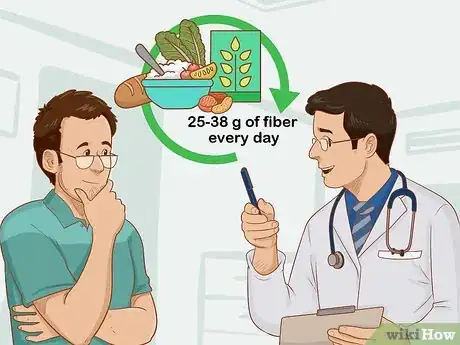

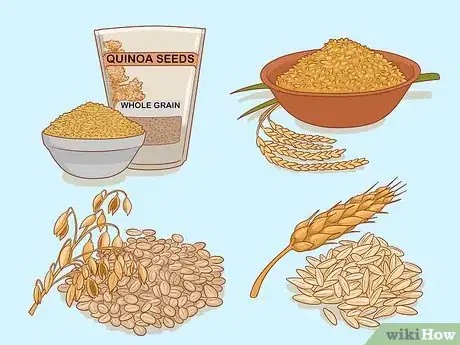
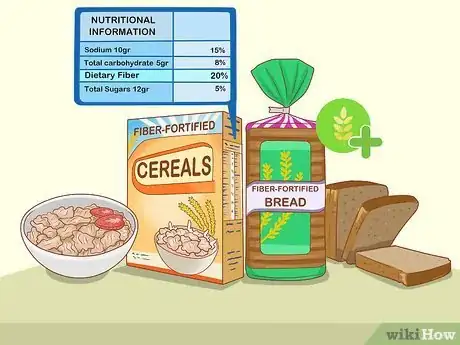



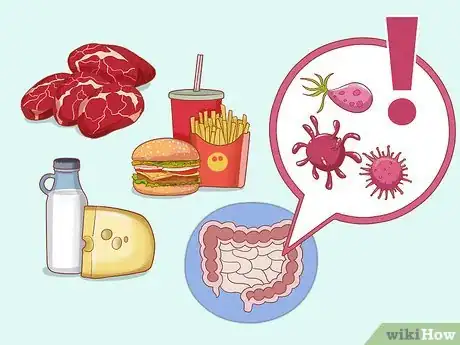




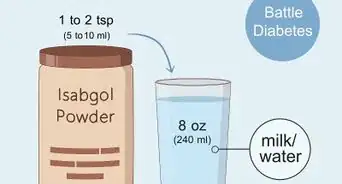



















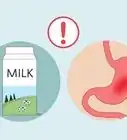
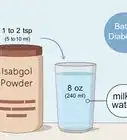





































Medical Disclaimer
The content of this article is not intended to be a substitute for professional medical advice, examination, diagnosis, or treatment. You should always contact your doctor or other qualified healthcare professional before starting, changing, or stopping any kind of health treatment.
Read More...